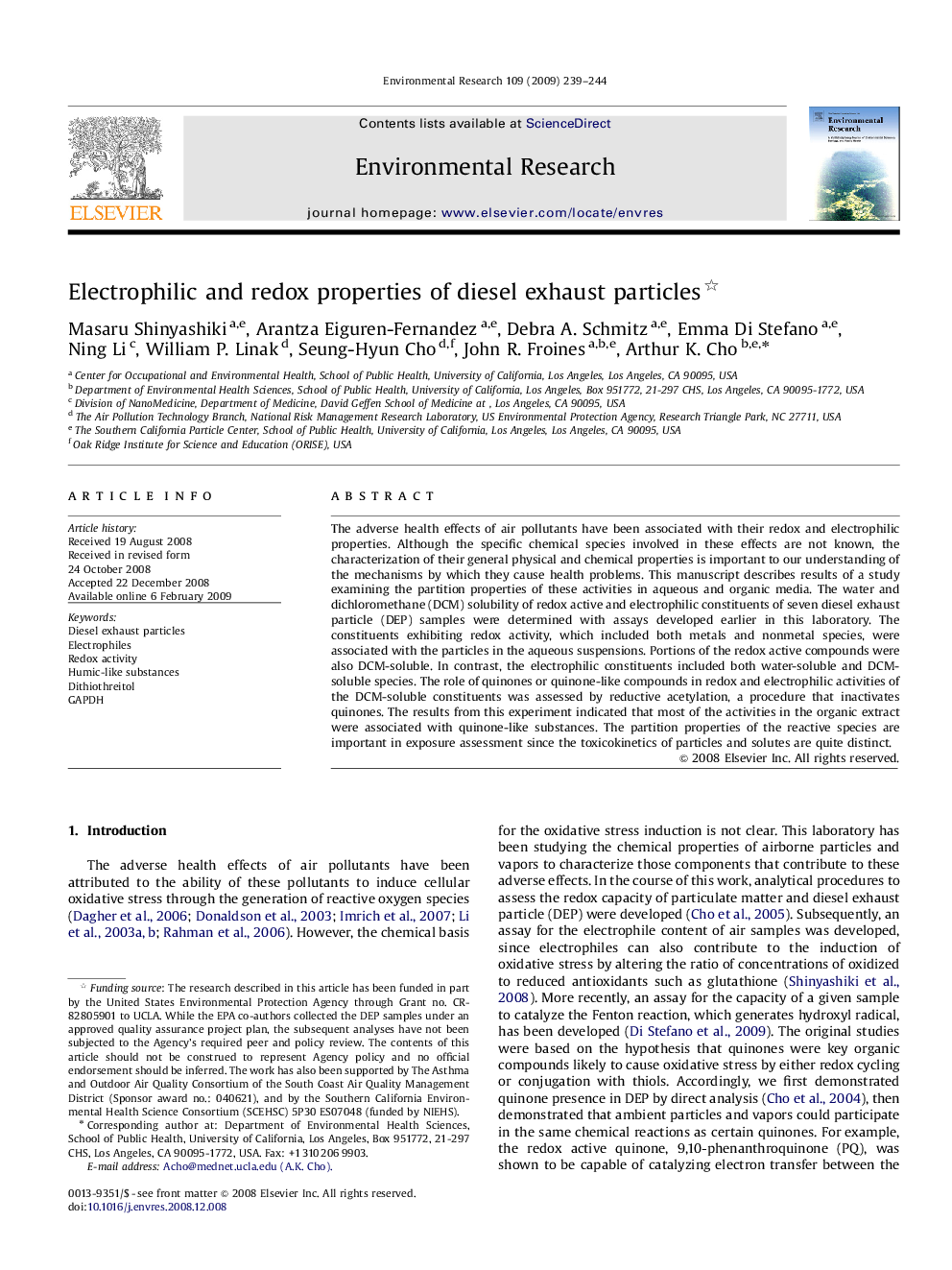| Article ID | Journal | Published Year | Pages | File Type |
|---|---|---|---|---|
| 4470713 | Environmental Research | 2009 | 6 Pages |
The adverse health effects of air pollutants have been associated with their redox and electrophilic properties. Although the specific chemical species involved in these effects are not known, the characterization of their general physical and chemical properties is important to our understanding of the mechanisms by which they cause health problems. This manuscript describes results of a study examining the partition properties of these activities in aqueous and organic media. The water and dichloromethane (DCM) solubility of redox active and electrophilic constituents of seven diesel exhaust particle (DEP) samples were determined with assays developed earlier in this laboratory. The constituents exhibiting redox activity, which included both metals and nonmetal species, were associated with the particles in the aqueous suspensions. Portions of the redox active compounds were also DCM-soluble. In contrast, the electrophilic constituents included both water-soluble and DCM-soluble species. The role of quinones or quinone-like compounds in redox and electrophilic activities of the DCM-soluble constituents was assessed by reductive acetylation, a procedure that inactivates quinones. The results from this experiment indicated that most of the activities in the organic extract were associated with quinone-like substances. The partition properties of the reactive species are important in exposure assessment since the toxicokinetics of particles and solutes are quite distinct.
